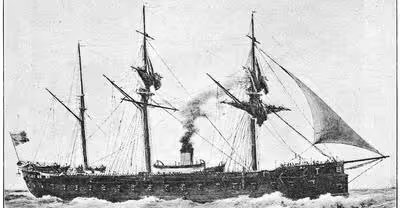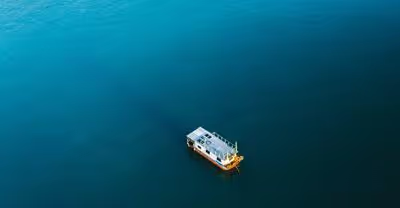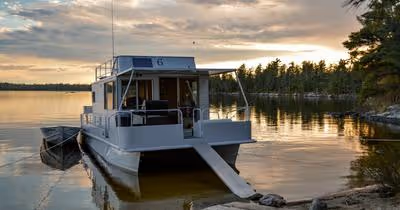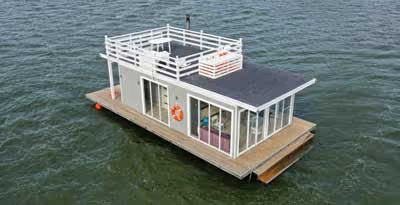
Key Takeaways
- The first metal boat was an ironclad warship called Gloire.
- Ironclad warships laid the foundation for modern warships.
- Steel is the primary metal used in shipbuilding for transporting goods.
Uncover the fascinating history of the first metal boat, tracing its origins and significance in maritime exploration—satisfy your curiosity today.
The first metal boat was an ironclad warship called Gloire, which was launched by the French Navy in November 1859. This steam-propelled warship was protected by iron and steel armor plates, showcasing a significant advancement in ship construction and providing better protection against attacks.
My research includes examining historical documents and consulting reputable sources. As such, I’ll provide a comprehensive and engaging narrative on the first metal boat, its impact on naval warfare, and how it paved the way for the diverse range of metal boats, we see today.
What Is The First Metal Boat?
When we talk about the history of boats, many people think of wooden vessels sailing across vast oceans. However, as the need for stronger ships grew, especially during times of warfare, metal boats began to take shape.
These innovative creations helped revolutionize the world of shipbuilding and naval combat.
The first metal boat recorded in history was the ironclad warship, launched by the French Navy in November 1859.
Named Gloire, this steam-propelled ship was protected by iron and steel armor plates, offering unprecedented durability and strength in naval warfare.
The development of ironclad ships came as a response to the vulnerability of wooden warships, which were prone to damage from explosive and incendiary shells during the Crimean War. This French-built vessel was also the first warship armed with heavy guns which could fire explosive shells or solid-shot projectiles over long distances.
History of Iron and Steel Boats
The Industrial Revolution in the 19th century brought major changes to shipbuilding technology, leading to the introduction of iron and steel boats that have a rich history. The history of these sister ships involves the following:
The Transition from Wooden Hulls to Metal
The Industrial Revolution brought about major changes in shipbuilding. Major contributions to the iron industry were made by John Wilkinson, an English industrialist. Before this period, wooden hulls were the primary material used for boats.
However, wooden hulls had limitations in size, and they were vulnerable to damage from explosive shells or fire. The transition from wooden hulls to metal, specifically iron and steel, addressed these issues and presented new opportunities for shipbuilders.
The Iron Hull allowed for larger ships and better resistance against enemy cannonballs and fire risks.
As mentioned, the first ship was built in the 1800s. Known as an iron steamship, this iron boat was the beginning of a new world in boat construction.
Compact Steam Engines and Paddle Steamers
As iron hulls became more prevalent, the development of compact steam engines in the mid-1800s expanded their capabilities. The steam engine allowed for faster propulsion, and paddle steamers became popular for transporting goods and passengers.
These steam engines made iron and steel ships essential components for various navies worldwide, eventually leading to the ironclad warships' development. These warships, such as the French Navy's Gloire, were steam-propelled and protected by iron or steel armor plates.
The iron passenger vessel, designed after the Industrial Revolution, brought more affordable and efficient transportation options, as these ships could displace between 2,000 and 5,000 tons.
The use of steel ships further improved on the benefits introduced by iron hulls, with steel providing even greater strength and durability.
To better illustrate the differences between metal and wooden boats, here is a table comparing the properties of these materials:
Significant Metal Boats in History
There are various metal boats available in the market. These excellent ships have played a crucial role in naval warfare, helping shape many significant battles.
Now, let’s delve into some of the significant metal boats in history.
Iron Steamships Including the British Royal Navy's First
The use of wrought iron as the primary building material for ships took off in the 19th century. Iron steamships were both robust and reliable compared to wooden ships, providing better protection against enemy fire.
Thomas Wilson, the owner of an ironworks, built and launched the first iron-hulled vessel specifically for the commercial market in 1822. Meanwhile, the British Royal Navy saw the potential of iron steamships and launched their first iron-hulled paddle wheel steam warship, HMS Nemesis, in 1840.
As iron steamships became more popular, shipbuilders continued to innovate and experiment with steel construction. Steel provided many advantages, such as increased strength and lighter weight, making it a critical material in the construction of modern ships.
Notable Ironclad Warships
With ironclad ships becoming the norm, various navies worldwide began to build their own vessels. Among the most notable ironclad warships were:
- Gloire: The first ironclad warship, launched in November 1859 by the French Navy. It marked a significant turning point in naval warfare, as it demonstrated the advantages of armor plate protection.
- USS Monitor: A revolutionary ironclad warship built for the Union Navy during the American Civil War in Hampton Roads. It was designed by John Ericsson and featured a rotating turret, a first in naval history.
- USS Cumberland: A wooden-hulled warship retrofitted with iron plates by the United States Navy in the 1860s. This Cumberland is notable for being one of the first hybrid ships to showcase the benefits of iron armor.
Design and Construction Innovations in Metal Boat History
The history of metal boats dates back to the early 19th century when innovations in design and construction revolutionized the shipping industry. Some design and construction innovations in metal boat history include
Propulsion Systems
One of the most significant innovations in metal boat history was the introduction of steam propulsion. Early iron ships, such as Great Britain and Great Western, were designed as paddle steamers.
These vessels featured two paddle wheels on either side, powered by steam engines, which propelled the ships through the water.
Over time, steam propulsion systems evolved, incorporating more efficient and powerful engines, better fuel sources, and, ultimately, transitioning from paddle steamers to screw-driven vessels.
Unique Features
As metal boat construction techniques improved, ships built with iron or steel hulls offered unique advantages over their wooden counterparts. The larger metal-hulled ships allowed them to carry more passengers and cargo.
Additionally, their increased strength and sturdiness provided enhanced safety and durability.
Some exceptional features in metal boat history include the development of watertight compartments, which improved a ship's buoyancy and survivability in case of damage. Also, there are advancements in propeller design that significantly increased efficiency and speed.
Armor
An important aspect of metal boat history is the development of heavy armor protection for warships. Early examples of armored vessels, such as the floating ironclad batteries used during the American Civil War, featured heavy metal objects bolted to a wooden hull, providing a degree of protection against enemy fire.
This concept evolved to include fully armored hulls, eventually giving rise to the modern battleship. These heavily fortified vessels showcased the true potential of metal boat construction and revolutionized naval warfare during the maiden voyage.
This is because of their sturdy construction, powerful weaponry, and overall dominance on the battlefield.
Legacy of Metal Boats and Ships Today
Metal boats and ships have been essential to human maritime endeavors for centuries. Starting with humble beginnings in ancient times as small, sturdy vessels for transportation and fishing, metal boats have now evolved into powerful and sophisticated machines.
These modern marvels of engineering find use in both civil and military applications and demonstrate the significant leaps in marine technology and metallurgy that humanity has achieved in the pursuit of more capable seafaring vessels.
The ironclad warship was the first metal boat, which played a pivotal role in maritime history. It significantly changed the face of naval warfare and laid the foundation for modern warships.
Today, major shipbuilding nations possess robust metallurgical expertise, and countries like Ukraine are known for producing steel and building ships. From massive cargo ships transporting goods across the seas to cutting-edge naval vessels safeguarding national interests, various types of steel have become the fundamental metals used in shipbuilding.
Ironclads are now a relic of the past, but their legacy lives on in the steel-built ships of today that traverse the world's oceans, making our globalized society's functioning possible.










